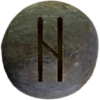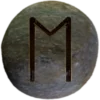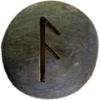Last Updated on October 8, 2024

Helheim, sometimes spelled Hel or Helheimr, is the realm of the dead in Norse tradition. Located in the deepest part of the Nine Worlds, it lies far from the light and warmth of the other realms. The goddess Hel, daughter of the trickster god Loki and the giantess Angrboða, rules this realm. Hel governs over those who die of sickness, old age, or any death that is not glorious in battle. Warriors who fall in combat are taken to Valhalla or Fólkvangr. Those who die in bed or from illness find their final resting place in Helheim.
Helheim sits beneath one of the roots of Yggdrasil, the World Tree. The road leading to it is long and difficult, guarded by the giant hound Garmr. This path represents the final journey of the soul, where only the bravest or those guided by special forces can make it without fear.
The goddess Hel herself appears half alive and half dead. Her appearance reflects this duality, with one side of her body vibrant and the other decaying. In this realm, she keeps watch over the souls that arrive, making sure none can return to the land of the living. Her cold and emotionless demeanor aligns with the stark, unwelcoming nature of Helheim.
Helheim’s Role in Asatru
For modern Asatru practitioners, Helheim plays an important role in understanding death and the afterlife. It’s not a place of punishment like the Christian concept of Hell, despite some etymological similarities in their names. Instead, Helheim is where souls rest after a natural death. Asatru followers see it as a part of the natural order of life and death, a necessary phase in the cycle of existence.
Rituals honoring ancestors or the dead often acknowledge Helheim as the place where loved ones reside after death. The goddesses Hel and the realm she rules provide a connection between the living and the dead. Many Asatru followers seek to honor their ancestors by making offerings, seeking their guidance, or simply remembering their wisdom. Helheim is a reminder that death is not to be feared but respected, as it is part of the balance of life.
The Elder Futhark Rune Connection
The rune most closely associated with Helheim is the Hagalaz rune. Hagalaz represents disruption, death, and transformation. It speaks to the inevitable forces of nature that bring change, much like the journey from life to death. In Asatru, the rune is a reminder of the destructive but necessary aspects of existence, similar to how Helheim is a final resting place, not as a source of fear but of transformation.
Helheim, with its ruler Hel, holds a significant place in the understanding of life, death, and what lies beyond.


